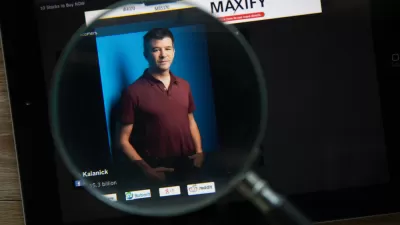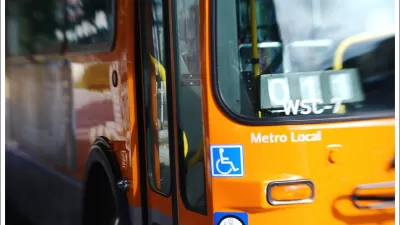Eric Jaffe interviews Jarrett Walker, the author of a new, nonpartisan treatise on thinking rationally about transit.
As a transit planning consultant of twenty years, Jarrett Walker has confronted his fair share of well-intentioned but misguided proposals. So after three years of blogging about it, he has distilled his insights in a new book that, according to Jaffe, "feels capable of teaching anyone, beginner or beyond, to speak Transit more fluently."
The problem, Walker explains, is that even when decisionmakers and advocates push for better transit, they "simply don't understand it. Most have never seen a readable explanation of how transit works as a tool, or of the real choices it requires us to make." Which is why, he claims, many discussions of transit development are led astray from the basic objective of "helping people to get where they're going, or to access more of the city easily."
Without proselytizing any particular ideology, Walker lays out a framework that clarifies exactly what variables are elemental to any transit system, and how changing one affects the other.
One such variable is frequency, which is especially easy for motorists to overlook. "Frequency is how transit approximates the freedom that's inherent in your car or bike... Imagine a gate at the end of your driveway that opens only once every 30 minutes."
Other common mistakes he points out are electing for direct (i.e. no-transfer) service over a simpler, more efficient network, or forgetting the tradeoff between ridership and area coverage.
"It's not about imposing my values," he says, "but giving you the tools you need to advocate yours."
FULL STORY: Explaining Transit's Secret Language

Planetizen Federal Action Tracker
A weekly monitor of how Trump’s orders and actions are impacting planners and planning in America.

Chicago’s Ghost Rails
Just beneath the surface of the modern city lie the remnants of its expansive early 20th-century streetcar system.

San Antonio and Austin are Fusing Into one Massive Megaregion
The region spanning the two central Texas cities is growing fast, posing challenges for local infrastructure and water supplies.

Since Zion's Shuttles Went Electric “The Smog is Gone”
Visitors to Zion National Park can enjoy the canyon via the nation’s first fully electric park shuttle system.

Trump Distributing DOT Safety Funds at 1/10 Rate of Biden
Funds for Safe Streets and other transportation safety and equity programs are being held up by administrative reviews and conflicts with the Trump administration’s priorities.

German Cities Subsidize Taxis for Women Amid Wave of Violence
Free or low-cost taxi rides can help women navigate cities more safely, but critics say the programs don't address the root causes of violence against women.
Urban Design for Planners 1: Software Tools
This six-course series explores essential urban design concepts using open source software and equips planners with the tools they need to participate fully in the urban design process.
Planning for Universal Design
Learn the tools for implementing Universal Design in planning regulations.
planning NEXT
Appalachian Highlands Housing Partners
Mpact (founded as Rail~Volution)
City of Camden Redevelopment Agency
City of Astoria
City of Portland
City of Laramie





























